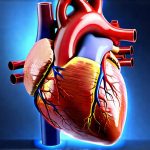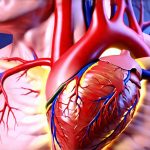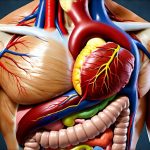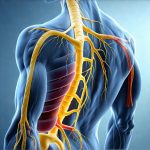The sensation of nausea coupled with chest discomfort can be profoundly unsettling, prompting many individuals to seek answers about its origins. While often associated with digestive issues or anxiety, these symptoms can sometimes stem from a less-recognized source: the buildup and retention of gas within the gastrointestinal tract, leading to internal pressure that impacts nearby organs and nerve pathways. This isn’t simply about feeling bloated; it’s about how excessive gas, particularly when not adequately relieved, can trigger physiological responses that mimic more serious conditions, causing significant distress and worry. Understanding this interplay between gas retention and discomfort is crucial for identifying potential triggers and exploring effective management strategies.
This phenomenon arises because the digestive system isn’t always a perfectly efficient machine. As food breaks down, gases are naturally produced through fermentation processes in the gut, especially when consuming certain types of carbohydrates or fiber-rich foods. In most cases, this gas is released through burping or flatulence without issue. However, factors like rapid eating, swallowing excess air, intestinal motility disorders, or even specific dietary choices can lead to increased gas production and/or reduced expulsion, resulting in a buildup of pressure within the digestive system. This pressure doesn’t just remain localized; it can radiate outwards, affecting the diaphragm, chest cavity, and nerve endings that contribute to feelings of nausea and discomfort.
The Physiology of Gas & Discomfort
The human digestive system is a complex network designed to process food efficiently. However, inherent in this process are opportunities for gas production. When we eat, particularly foods high in fermentable carbohydrates (like beans, broccoli, or onions), bacteria in the large intestine break down these undigested components. This bacterial fermentation produces various gases, including hydrogen, carbon dioxide, and sometimes methane. Normally, the body eliminates this gas through belching or flatulence. But when things go awry – perhaps due to a slowed digestive process or anatomical factors that hinder gas expulsion – these gases accumulate, increasing internal pressure.
This increased pressure isn’t just felt in the abdomen. The diaphragm, which is essential for breathing, sits directly below the stomach and intestines. Excessive gas can push upwards against the diaphragm, restricting its movement and causing a feeling of fullness or even shortness of breath. Furthermore, the vagus nerve, a crucial pathway connecting the gut to the brain, is highly sensitive to distension (stretching) within the digestive tract. When the gut becomes overly full of gas, it stimulates the vagus nerve, potentially triggering nausea, vomiting, and feelings of anxiety. This explains why some individuals experience significant psychological distress alongside their physical symptoms. If you suspect a link between your gut health and other issues, learning about gut health can be insightful.
The sensation of chest discomfort isn’t always indicative of a cardiac issue; it can often be referred pain originating from the digestive system. The proximity of the esophagus to the stomach and intestines means that pressure in these areas can easily radiate upwards, mimicking heart-related symptoms. This is particularly true for those who are prone to anxiety, as they may misinterpret these sensations as signs of a more serious medical condition, creating a vicious cycle of fear and discomfort. Recognizing food intolerances can also help pinpoint the source of digestive distress.
Dietary & Lifestyle Factors Contributing To Gas Retention
Many everyday habits contribute to increased gas production and retention. Rapid eating, for example, often leads to swallowing excessive amounts of air – a significant contributor to bloating and discomfort. Similarly, carbonated beverages introduce bubbles directly into the digestive system, exacerbating the problem. Specific food choices also play a key role. Foods high in FODMAPs (Fermentable Oligosaccharides, Disaccharides, Monosaccharides, And Polyols) are known to be poorly absorbed by some individuals, leading to increased fermentation and gas production. These include certain fruits, vegetables, dairy products, and sweeteners.
Beyond diet, lifestyle factors like lack of physical activity can contribute to sluggish digestion and reduced gas expulsion. Regular exercise helps stimulate intestinal motility, encouraging the movement of gases through the digestive tract. Stress and anxiety also play a significant role, as they can disrupt normal digestive function and exacerbate symptoms. Finally, certain medical conditions – such as irritable bowel syndrome (IBS), gastroparesis (delayed stomach emptying), or small intestinal bacterial overgrowth (SIBO) – can significantly impair gas transit and increase the likelihood of retention and associated discomfort. Understanding functional dyspepsia is also key to differentiating typical digestive upset from more complex issues.
Identifying & Managing Triggers
Pinpointing specific triggers is essential for managing gas-related nausea and chest discomfort. Keeping a detailed food diary, noting what you eat and when symptoms arise, can help identify problematic foods. This isn’t about eliminating entire food groups unnecessarily; it’s about understanding individual sensitivities. Experimenting with portion sizes and meal timing can also be beneficial. For example, reducing the amount of fiber consumed in a single sitting or spreading out meals throughout the day may lessen gas production. Sometimes even small portions are enough to cause discomfort.
Beyond dietary adjustments, incorporating regular physical activity into your routine is crucial. Even moderate exercise, such as walking for 30 minutes daily, can significantly improve digestion and reduce bloating. Stress management techniques, like deep breathing exercises, meditation, or yoga, can also help regulate digestive function and alleviate anxiety-related symptoms. It’s important to remember that stress often exacerbates digestive issues, creating a feedback loop of discomfort.
The Role of Over-the-Counter Remedies
Several over-the-counter remedies may provide temporary relief from gas-related symptoms. Simethicone, an anti-foaming agent, can help break down gas bubbles in the stomach and intestines, reducing bloating and discomfort. Activated charcoal is another option that some find helpful, as it can absorb gases in the digestive tract. However, it’s important to note that activated charcoal can interfere with medication absorption, so consult a healthcare professional before using it regularly.
Lactase supplements can be beneficial for individuals who are lactose intolerant, helping them digest dairy products and reduce gas production. Probiotics, which contain live bacteria, may also help restore balance to the gut microbiome and improve digestion over time. However, the effectiveness of probiotics varies depending on the strain and individual needs. Remember that these remedies offer symptomatic relief; they don’t address the underlying cause of gas retention. Learning how to avoid discomfort from common irritants can also make a big difference.
When To Seek Medical Attention
While many cases of gas-related nausea and chest discomfort can be managed with lifestyle adjustments and over-the-counter remedies, it’s crucial to seek medical attention if symptoms are severe, persistent, or accompanied by other concerning signs. These include: – Severe abdominal pain – Persistent vomiting or diarrhea – Unintentional weight loss – Blood in the stool – Fever – Difficulty breathing.
These symptoms could indicate a more serious underlying condition, such as an intestinal blockage, inflammatory bowel disease, or even heart problems. A healthcare professional can accurately diagnose the cause of your discomfort and recommend appropriate treatment options. They may perform tests to rule out other medical conditions and provide personalized advice on managing gas-related symptoms effectively. Self-treating without proper diagnosis can delay necessary care and potentially worsen the condition. Some individuals find that even the smell of food can trigger these uncomfortable sensations, requiring careful attention to their environment. Also, be mindful of how spicy foods may impact your digestive system and exacerbate symptoms.


















